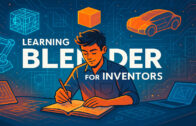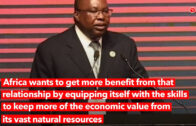The Broken Bridge
MEMBERS & VISITORS:
The Broken Bridge
Malik’s journey of growth and redemption through innovation
“The Broken Bridge”
The sun was setting behind the jagged hills of a small village in West Africa. Malik, a quiet but intelligent young man in his early thirties, stood at the edge of a wide river. For years, this river had divided his village from the neighboring one, making it impossible for the two communities to easily trade goods or share knowledge. There had been a bridge once, built long ago by his ancestors, but it had collapsed after years of neglect. Malik’s people were struggling to thrive because they couldn’t access the market on the other side. Every attempt to rebuild the bridge had failed, leaving Malik feeling the weight of disappointment from his people. He had always been good at solving small problems, fixing things here and there, but this was beyond him. His heart ached because he had seen his community shrink in hope, their potential slipping away like the waters beneath the broken bridge.
Malik’s flaw, the one that gnawed at him daily, was his belief that he wasn’t creative enough, that he wasn’t the one to lead a solution. He thought creativity was the gift of artists and visionaries, not someone like him who only knew hard work and logic. His fear of failure held him back, despite his deep love for his village and his desperate need to see it flourish again. Yet, something stirred in him—something that whispered that he had the ability to solve this problem if only he could unlock his potential.
One evening, after another failed attempt to rebuild the bridge using traditional methods, Malik sat under the baobab tree, his eyes reflecting the stars above him. He pulled out an old, weathered notebook where he had sketched ideas for the bridge—each one more impractical than the last. As he closed the notebook in frustration, an elder of the village, Mama Ayo, approached him.
“Malik,” she said, her voice soft but filled with the weight of wisdom. “You carry the burden of this broken bridge in your heart, but maybe it’s not the bridge you need to rebuild. Maybe it’s the way you think.”
He looked up at her, confused. “What do you mean, Mama Ayo?”
She handed him a small tablet, something new and foreign to Malik. “I’ve been to the city recently, and I saw something extraordinary. They call it AI—Artificial Intelligence. It’s not magic, but it can help you see things differently, help you design and create in ways we couldn’t imagine before.”
Skeptical but intrigued, Malik took the tablet. As the days passed, he began learning more about AI, immersing himself in understanding how it could assist in solving complex problems. The more he learned, the more he realized that his old way of thinking—linear, narrow, and limited by fear—was holding him back. He discovered the world of problem-solving frameworks: Design Thinking, TRIZ, Systems Thinking, all enhanced by AI tools that could predict outcomes, simulate scenarios, and even generate ideas.
With newfound energy, Malik applied these methods to his bridge problem. He used AI-powered tools to analyze the river’s current, the materials available in the village, and the structural integrity needed to withstand future floods. He created models, tested them virtually, and refined his designs. Every time he hit a wall, the AI tools guided him back, offering new insights and creative angles he had never considered before.
But this journey wasn’t without conflict. The village elders, skeptical of Malik’s “magic box,” questioned his methods. “This is not how we’ve always done things,” they said. “We trust in tradition, not machines.” Malik felt the weight of their disapproval, but he also felt the pull of progress. The tension tore at him—was he betraying his roots by embracing this new technology? Or was he honoring them by using every tool available to ensure the future of his village?
The conflict came to a head when a massive storm threatened to flood the river. The elders wanted to rely on the old methods—building a dam upstream with nothing but their hands and simple tools. Malik, however, knew it wouldn’t be enough. With the data he’d gathered and simulations he had run, he was certain that without immediate action, the river would overflow and wash away what little remained of the old bridge’s foundation.
In a tense village meeting, Malik stood up, his voice trembling but resolute. “I know the old ways have served us well,” he said, “but they won’t save us now. We must embrace the future, not out of disrespect for the past, but because our survival depends on it.”
The storm came that night, fiercer than anyone had anticipated. But Malik was prepared. Using the AI-enhanced design, he and a small group of villagers had built a temporary but sturdy structure that redirected the floodwaters. The village was saved, and for the first time in years, hope bloomed where fear had taken root.
With the storm passed, Malik’s bridge—designed with the help of AI—was built. It wasn’t just a physical structure; it was a bridge to a new way of thinking for the entire village. As the two communities began to trade and share knowledge once more, Malik realized that his journey wasn’t just about building a bridge. It was about rebuilding himself—his confidence, his creativity, and his belief in what was possible. He had sacrificed his old way of thinking, but in doing so, he had redeemed not just his village, but his own spirit.
The theme of sacrifice and redemption echoed in Malik’s story, not through grand gestures but through the quiet, determined steps of a man learning to trust his own mind. And in the process, he transformed his world.
Be sure to visit “Tharaka Invention Academy” where you can learn about how anybody can acquire the mindset, skills, and knowledge needed by all problem solvers, innovators, and inventors. The post entitled “Global Innovators: 101 Careers Transformed by Invention Skills” contains links to many more similar stories about these people worldwide.
Questions?? Contact me any time at profsinger@inventionschool.tech
We have published other informative posts on Invention School’s website which may interest you. To view our entire catalog of over 1000 posts go to inventionschool.tech/category/blog/ or use our handy search tool to find topics of interest to you.
Mechanical/Solar Engineer, Prof. Oku Singer
(30)






